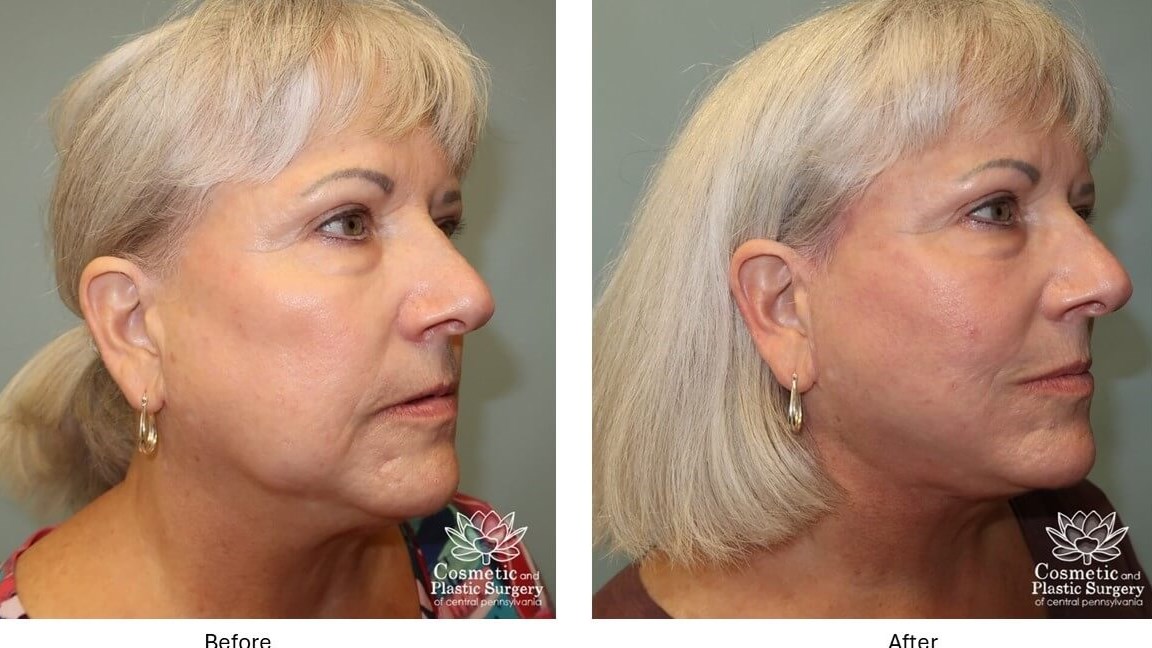Facelift
&srotate=0)
Facelift has long been a mainstay in plastic surgery to minimize the affects of aging. It is the goal standard to correct age related facial changes. As time passes, the midface descends, creating sagging along the chin; we call these jowels. These jowels make the overall shape of the face look more like a box or square, where a youthful look is more V shaped. The jowels create this problem. Additionally the creases around the mouth and nose become deeper; also signs of aging. Facelift makes these problems much better, minimal.
Years ago facelifts were performed differently than today. The skin was pulled tight. Today facelifts lift and pull the inside tissues. The inside tissue that is pulled is called the SMAS or the superficial musculoaponeurotic system. This allows the shape of the face to be returned to a youthful look without making the skin really tight. Some excess skin is removed, but not excessive. Patients have a natural looking result (your friends might not know that you had a surgery, but that you don’t look tired).
Non surgical procedures such as fillers and botox can only do so much to help the aging process. At some point, a Facelift becomes more cost effective and looks more natural. Fillers and Botox have a role in correction of the aging process, however should not be used in excess as facial contours become unnatural. On the other hand, facelift can only do so much and fillers and botox can augment that areas that facelift can not address.
Although a facelift is a surgical procedure, it is far superior in eradicating the signs of aging over the minimally invasive techniques. It will not prevent the appearance of future aging, but will restore your youthful appearance for a much greater time than other non-invasive procedures. Most patients feel like the facelift can last about 7-10 years; benefits of the surgery can last longer.
Generally, facelift is an outpatient procedure. I typically perform it under general anesthesia. Pain after is very minimal, typically a narcotic is needed for the first night only. Sutures are removed 1 week after surgery. This can be minimized by sleeping upright in a chain for the first week after surgery, if you are able. Patient typically return to work 10-14 days after surgery (swelling and bruising will be not that noticeable at this point).
&srotate=0)
Frontal view of facelift
